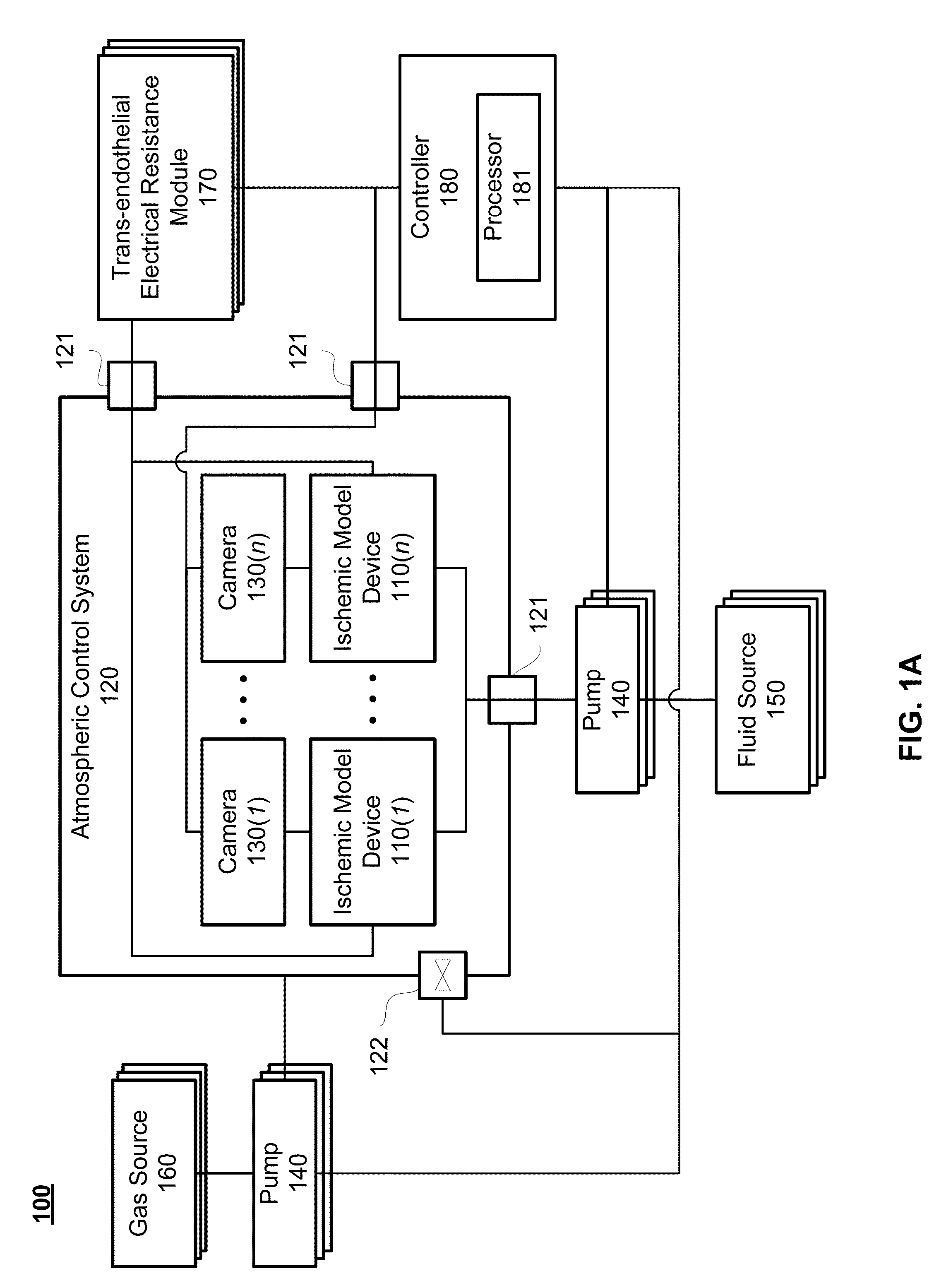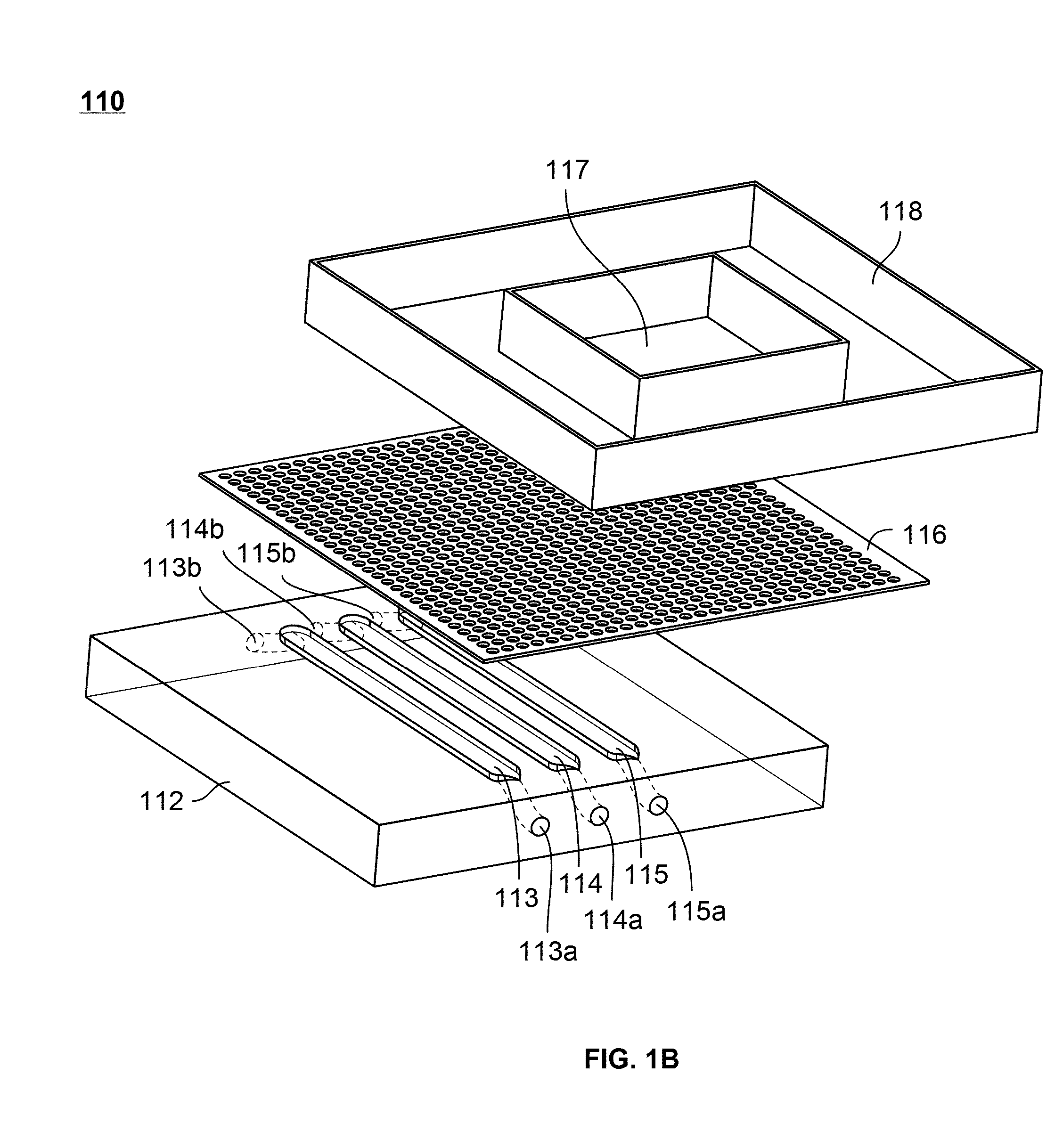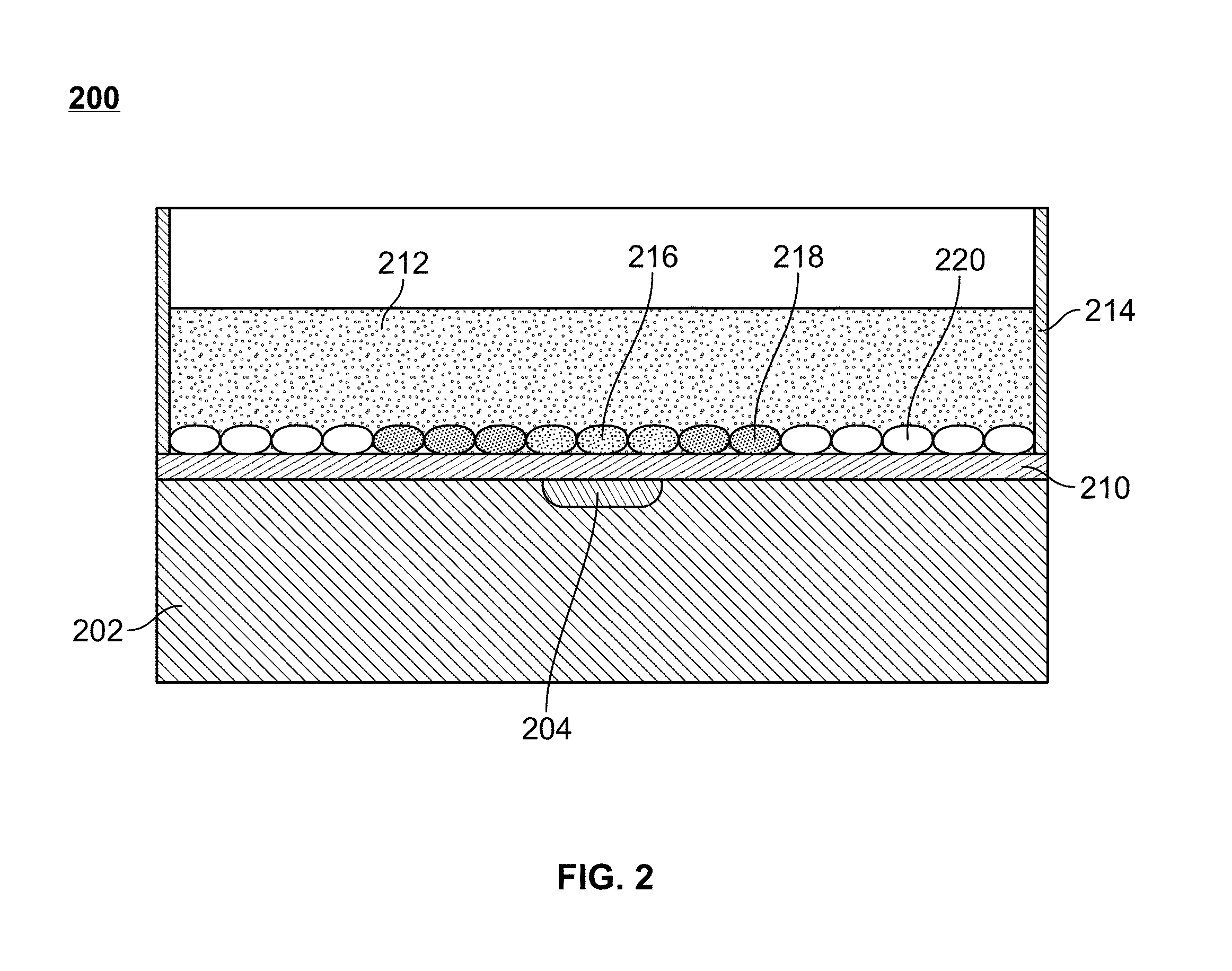Microfluidic device for generating neural cells to simulate post-stroke conditions
a microfluidic device and neural cell technology, applied in the field of microfluidic devices for generating neural cells to simulate post-stroke conditions, can solve the problem of extremely limited treatment of ischemic strok
- Summary
- Abstract
- Description
- Claims
- Application Information
AI Technical Summary
Benefits of technology
Problems solved by technology
Method used
Image
Examples
examples
I. Fabrication of a Microfluidic Cell Culture Device
[0109]A microfluidic device for subjecting different neural cells to different environments can be produced according to the methods below. This device bears a neural compartment juxtaposed above three parallel microchannels. The neural compartment is separated from the microchannels by a microporous polyester membrane bonded irreversibly through a thin layer of silicone adhesive. FIG. 1 shows an exploded view of such a device.
[0110]The neural chamber accommodates a cell culture area of ˜0.5 cm2, close to the surface area of a section of adult rat brain. The channels are fabricated to have dimensions of 1 mm width, 250 μm height and 1.1 cm (length) separated from each other by 1 mm. The design of the neural chamber facilitates standard well-plate format of cell culture, which is simple, routine, and does not require continuous perfusion. The reservoir in the culture chamber holds ˜150 μl media. The membrane (10 μm thickness and por...
PUM
 Login to View More
Login to View More Abstract
Description
Claims
Application Information
 Login to View More
Login to View More - R&D
- Intellectual Property
- Life Sciences
- Materials
- Tech Scout
- Unparalleled Data Quality
- Higher Quality Content
- 60% Fewer Hallucinations
Browse by: Latest US Patents, China's latest patents, Technical Efficacy Thesaurus, Application Domain, Technology Topic, Popular Technical Reports.
© 2025 PatSnap. All rights reserved.Legal|Privacy policy|Modern Slavery Act Transparency Statement|Sitemap|About US| Contact US: help@patsnap.com



